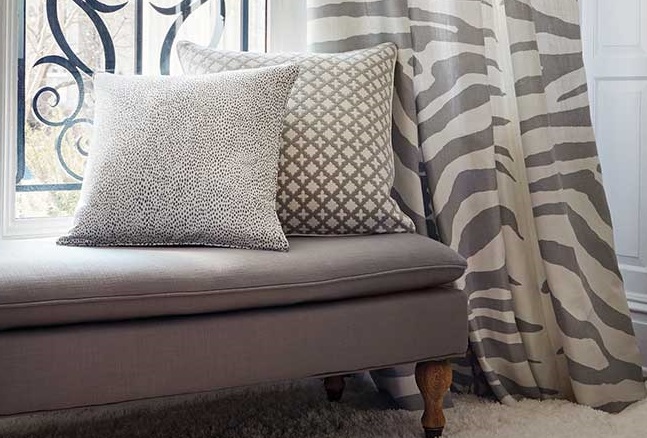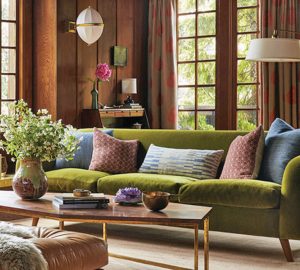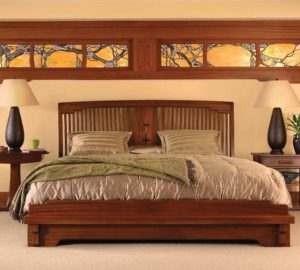timeless: animal prints
People have very strong feelings regarding animal prints: they either love them or hate them, no in-between. I happen to fall in the category of the former. I understand and respect the aversion to real animal skins, but with a printed or woven likeness, no creature has been harmed.
Decorating with animal skins and patterns literally can be traced back to caveman times. In those days, it was all about utility, not decorating the cave, although animal-skin throws were popular!
The look gained greater popularity in the 16th and 17th centuries, when weavers created depictions of exotic animal hides on tapestries. These told stories about wild and woolly creatures that, in truth, the weavers probably had only heard about, not actually seen.
Moving forward to the 18th and 19th centuries, the ability to print on cloth reinforced the popularity of these patterns. Adding animal prints to the home implied that the homeowners had an understanding of the exotic, even if they hadn’t actually gone on safari. It was considered very sophisticated.
Today marketing gurus have put animal patterns on everything from baby bibs to lamps. Just look at Mackenzie Childs and note that a little goes a long way. Choose your animal and application wisely. Better yet, consult a design professional.
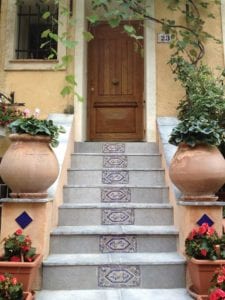 come to terms with … stairs
come to terms with … stairs
You might not realize it, but stairs can set the tone for the rest of a home. This architectural element fascinates me when I am traveling and touring historic homes. There are a million design combinations for the treads, risers, handrails and balusters, all opportunities to make stairs your own.
Let’s focus on the riser. One of my favorite materials is tile. For some reason, when I see tile used on a stair, I automatically think there is some sort of history to the home (even if it’s new construction!), and I wonder whose feet have traversed it over the years.
If you travel, the ideal thing to do is find tiles from an exotic land that you can incorporate into your home. (This is a great way to personalize a backsplash in a kitchen, too.) The tiles are your souvenir; you are supporting a local artist; and you have one-of-a-kind stairs that no one can copy. This look also adds a sophisticated, original, artistic flair that carpet simply cannot match.
design redux: milk glass
My godmother was a collector, and I credit her for my lifetime interest in collecting multiples of things. She loved all things beautiful, especially items created by hand with artistic flair. She is the one who introduced me to colored glass. She had her living room window designed in 2-foot square sections to create shelf space for her extensive glass collection, including Murano, crystal, amethyst, ruby and milk glass. When the sun shone through this window, it gave the illusion of stained glass. On either side of her sofa were two statuesque, elegant, blue milk glass lamps. I was fascinated! They obviously were made of glass, yet they weren’t clear—how could that be?
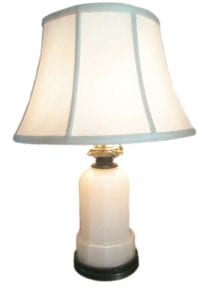 This sort of glass, now known as milk glass, originated in 16th-century Venice. It was first referred to as opaque glass. Besides white, its color spectrum included blue, pink, black, brown and yellow. This art form reached the pinnacle of popularity in the fin de siècle, the late 19th century. The wealthy of the Gilded Age collected it; the delicacy of the designs made it attainable only for them. To this day, the glass manufactured during that period is considered some of the finest ever produced, and it’s highly collectible.
This sort of glass, now known as milk glass, originated in 16th-century Venice. It was first referred to as opaque glass. Besides white, its color spectrum included blue, pink, black, brown and yellow. This art form reached the pinnacle of popularity in the fin de siècle, the late 19th century. The wealthy of the Gilded Age collected it; the delicacy of the designs made it attainable only for them. To this day, the glass manufactured during that period is considered some of the finest ever produced, and it’s highly collectible.
During the Depression, new glass products were more pedestrian and produced as ‘pressed glass,’ not hand-blown like their finer predecessors.
I purchased an antique white milk glass lamp at auction recently, and when I look at it, I always think of my godmother and thank her for helping to instill in me a love of beautiful things.





